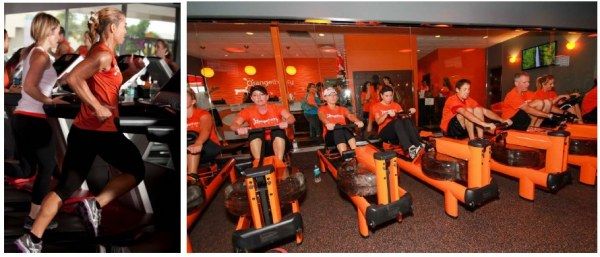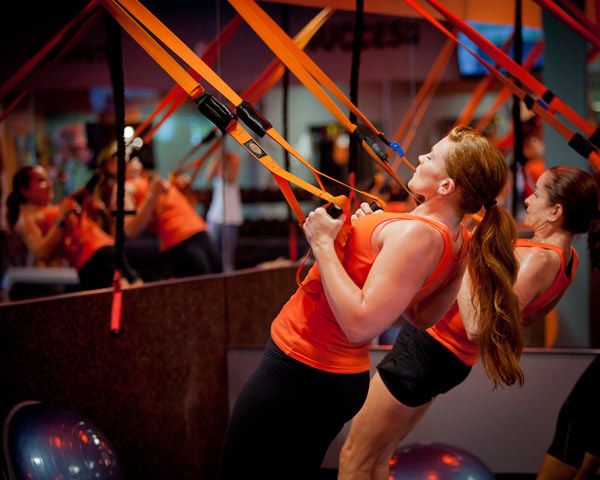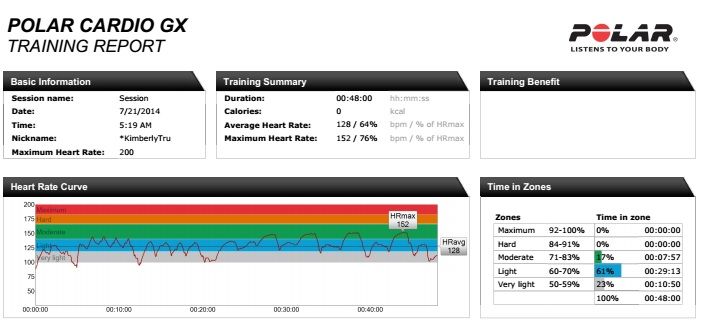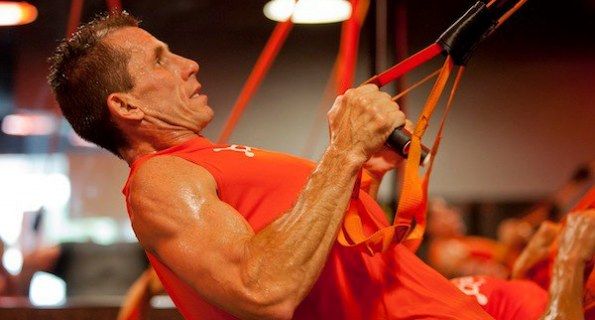It was 5:20 a.m. and the clock was ticking, and I had yet to make it past the registration desk at Orange Theory Fitness Broomfield. Thanks to some confusing signage, construction and a lack of coffee, I was late to the 5:15 a.m. class that I was so looking forward to.
When I was planning my trip to Colorado, one of the things I was hoping to do was sample a variety of group exercise classes. Not only did I want to continue my training I wanted to try things that are not available in northeast Indiana. My initial ideas had me searching for boutique cycling classes - Freecycle, Recycle, Expensivecycle - whatever they are called but I was falling short. There are a plethora of barre studios but I've done that and, to be honest, most don't offer a significant reduced rate for new attendees - something I was banking on when sampling classes.
And then I found Orange Theory Fitness. Less than 15 minutes from where we were staying, unavailable in Indiana and offering three free classes to newbies in July, it fit my basic criteria. The workout, I would soon learn, would be one that would challenge and excite me - something I've been missing since I began teaching group fitness.
Within 5 minutes of my arrival, I was strapped with a heart rate monitor and apologizing profusely to the instructor for being late. It's in poor taste, in my opinion, to be late to a group fitness class but with Orange Theory, it's definitely not good given the smaller space and the way it's organized.
From the website:
The Orangetheory Fitness training session is comprised of three components: treadmill interval training blocks, indoor rowing and weight room or resistance training blocks. The physiological theory behind the Orangetheory workout is known as “Excess Post-Exercise Oxygen Consumption,” or EPOC. By providing you with a heart-rate monitor and POD, we can monitor your 5-zone interval training sessions that we call the Orange 60. During the 60-minute workout, you will perform multiple intervals designed to produce 12 to 20 minutes of training at 84% or higher of your maximum heart rate, which translates to Zones 4/5. This program design produces workout "afterburn" effect, which is an increased metabolic rate for 24 to 36 hours after the workout.
Thankfully, the instructor was understanding and got me set up at a station in the resistance area. The workout, which came from OTF corporate, included three resistance blocks each consisting of three exercises. I did burpee rows and weighted situps, a new twist on plank jacks and TRX rows. An entire block was on the BOSU, with mountain climbers, sit-to-stands and lateral hops. It was challenging, and I felt like I was a weaker member of the class. However, OTF suggested to complete 2 to 4 rounds of each set and I definitely hit four each time.
After 20 minutes, it was time to hit the treadmill and rowers where we did a quarter-mile run and a 400-meter row, repeating as time permitted. The goal was to hit a push pace {OTF has three paces: steady, push and sprint}, and I did my best to be smart yet dedicated considering the previous day's 9-miler and the altitude. All the while, the instructor slyly corrected form, kept track of time and coached us to keep going.
My focus was on the monitor where live data via heart rate monitors was posted. OTF uses a generic maximum heart rate calculation based on age, which is used to determine which zone participants are in. The zones are color coded - gray (lowest), blue, green, orange and red (highest intensity) - and the goal is to spend most of the time in the green but hit the orange and red. The chart should look like a pyramid.
My chart looked like a pyramid ... if you were only looking at gray, blue and green. I felt like I struggled to hit the higher numbers, and I was frustrated to see that I was a low-performer when compared to the group. Only later did I realize that the computer had my maximum heart rate at 200 - that of a 20-year-old. I might be young at heart but my age is still 33. But, with the report that is emailed {perk alert!}, I was able to determine that I did hit the orange zone and would have spent more time in the green. Also, I think there's a bit of a learning curve with some of the exercises and once I became more familiar, I would have been able to push harder.
Though I wished I would have pushed harder, performed better, reached higher, I was in love with the experience. The studio was welcoming, the staff friendly and the instructor really took the time to help me understand what it was all about. She actually spent a good 10 minutes going over the chart and assuring me that I did better than the chart indicated (she didn't know about the HR mishap).
And then there's the workout. Though I often include some of the resistance moves in my class programming, I loved the set up and the pace. I'm not sure it would fit into my regular training during half marathon season but I would more than happy to see how it works.
Now to scrape together the money to open a franchise ... if only!
SEE ALSO: My friend Jesica at Runladylike wrote a great post about her experience at an Orange Theory in Florida.





Sounds fun and a good way to mix things up. We don't have that up here in NH. Perhaps it is a franchise opportunity:)
ReplyDeleteThat is so funny that mentioned Jesica because I felt like I had read about the OT somewhere else too!!
ReplyDeleteYou did great and for the first time to the class you probably did awesome. It is just different than you are used to. I bet if you had one to go to on a regular basis it would get easier to push harder. (if that makes sense!!) :)